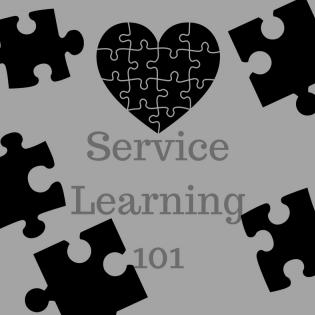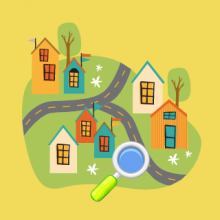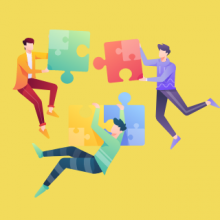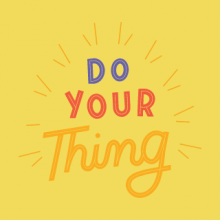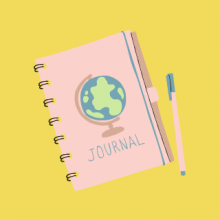Service Learning "101": A Guide for Leaders
Learning and action through service-learning give youth purpose to "do well and do good" because they see what they do matters and creates real solutions. This teaching and learning tool cultivates a caring community and prepares young people for responsible civic engagement, as well as college and career. The skills, practices, and reflection help us build a more generous, connected civil society.
The Service-Learning Process
Investigate > Plan > Act > Reflect > Demonstrate
The service-learning process mirrors other youth-centered methods. See the chart in the handouts below correlating the similar steps of four critcal-thinking strategies.
Investigate > Plan > Act > Reflect > Demonstrate
Step One: Investigate Community and Self
Investigation may involve youth in the following actions that define purpose and solidify youth ownership in the process:
- Identify interests and skills – what we care about and are good at
- Learn about community resources – research, field trips, and guest speakers
- Identify community needs – What could be improved? What is needed?
- Research an issue area and ways to address it - Toolkits for Issues We Care About
- Make a problem statement.
Get Started with these Community Builders
One of the ideas below can help determine the focus for learning and service.
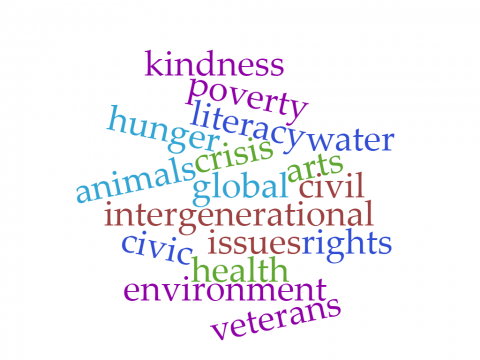
- You’re building community engagement, so look to your neighborhood or community for unique resources and experts, needs, or events as a starting place.
- The time of year may determine your focus. Look at the calendar of service to get ideas related to national events, like Martin Luther King, Jr. Day or a cultural celebration.
- Use the Build Community activities to explore what youth care about. Following their interests and community needs sparks more engagement.
- A good book may initiate conversations about things we can do. These Learning to Give literature guides provide discussion prompts for diverse books.
Example from a fourth-grade teacher: We entered "river" in the search because we have access to a river, and our class was talking about clean water systems. The lesson plan gave us the framework to investigate the scientific process and link it to language arts and social studies. We tested our river water and then organized a community clean-up project.
Research the Chosen Issue and How to Address It
Spark youth voice and choice to narrow the topic, collect information, and state a problem that can be addressed by the group. Here are ways youth learn more about an identified need:
- interview community members or experts (local nonprofits are a good resource of information)
- take a survey
- research and read literature
- observe a place (local farm, museum, retirement facility, etc.) or situation in person
This resource can guide the four types of research.
Make a Problem Statement
Help youth assert a problem statement about the needs/problem they found in their investigation. This statement gives structure to the planning of the service action.
Examples:
- The students took a survey about the type of bullying present at school. As a result of the survey, they state the problem that students are not skilled in conflict communication.
- After research and observation, the youth conclude that human-environment interactions have negatively impacted the Great Lakes ecosystem.
Investigate > Plan > Act > Reflect > Demonstrate
Step Two: Plan Service and Prepare for Action
It’s time for youth to design a plan to address the identified need in the problem statement. The role of the adult or facilitator is to guide youth toward independence, giving them as much voice and responsibility as they are ready for. Help them brainstorm possible actions to take. Encourage critical thinking and communication skills to narrow the options, verify the plan addresses a need, and determine next steps.
Be a reality check and ask questions. For example, if young people decide it is a good idea to donate collected used crayons to a neighboring school, make sure they communicate with the receiving school to ask whether this is something they want and in what form they would like the donations.
A workable plan is divided into action steps that can be checked off as they are completed. Below is a sample plan where teens identified the problem of pollution in a local river and planned a clean-up day in collaboration with a local environmental nonprofit.
- First, they wrote the plan in action steps on sticky notes: 1) contact the nonprofit, 2) determine a date, 3) make posters, 4) ask for donations of supplies, 5) get permission, and so on.
- Second, they put the steps in order on a board in a timeline.
- Third, they assigned names on different color sticky notes to take on different tasks.
- Fourth, as the group started taking action, they keep track of progress on the planning board and held each other accountable for their tasks.
Lean into youth voice and choice in the planning while you step back. Invite youth ownership and responsibility for planning through these suggestions to move from Adultism to Adult Supported.
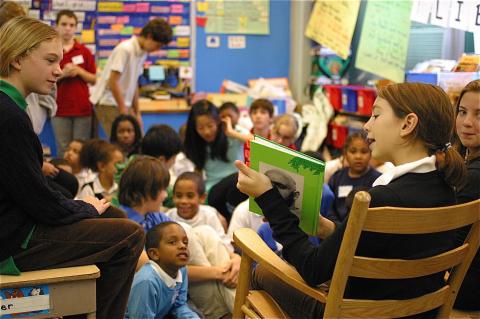 Planning tools and suggestions:
Planning tools and suggestions:
- Learning to Give has toolkits organized by issue areas. Toolkits serve as planning guides and include background information, project ideas, and community resources.
- See the handouts below for planning guides. This blank guide is useful for documenting the service-learning process.
- During group discussions, carefully consider the power of the pause. Young people need time to process the question and their answers and to navigate the social environment; silence allows for deliberate thinking. Giving questions in advance and allowing thinking time increases the quality of discussions.
- Magnify the impact of field trips by connecting social studies, language arts, art, and the philanthropic theme. Example: Use visual literacy strategies on a field trip to the art museum in discussions related to your service issue area.
- Relate their action to historical context by visiting local museums and historic sites. Learn about people, events, and organizations in history related to voluntary action for the common good.
Investigate > Plan > Act > Reflect > Demonstrate
Step Three: Take Action!

The action young people take to address a need empowers them to recognize they are capable of making a difference. The real-world experience extends thinking and broadens their world to see diverse places, people, and opportunities available to them. Read about the four types of service.
Recognizing that their actions matter is the first step on the path to lifelong empowerment and engagement in the community.
Document your planning and action steps in journals and with photos. Have young people write essays and poems about their experience and understanding of the issue and philanthropic concepts. These data tools will be used to communicate to others and validate the internal and external experiences of the givers. The documentation is also important so the experiment can be duplicated by others or repeated and improved upon in following years.
When the recipients of the service acknowledge what the young people have done, they get the most powerful reinforcement that what they do matters. Whenever possible, include the recipients in conversations and reflection.
Investigate > Plan > Act > Reflect > Demonstrate
Step Four: Reflect on Process and Impact
- Like in a scientific experiment, analyzing the service-learning process and action helps young people understand and internalize their action, impact, and possibility. Open-ended questions will provide opportunities to consider broader issues in the community and reflect upon their role as an individual in the neighborhood and the global community.
- View the facilitator mini-course Reflection in Service for background and ideas. This Reflection Guide asks participants to consider what, so what, and now what.
- As you facilitate the critical thinking process, use the collected data and scaffolding to help youth form connections and analysis. Guide youth to interpret and communicate cause-effect relationships.
- Ask what they observed about responsibility and the effect of individuals acting for the common good.
- Engage youth in a variety of post-service reflection activities (writing, physical activity, music, discussion, social media, video, and art) to extend their thinking.
Investigate > Plan > Act > Reflect > Demonstrate
Step Five: Demonstrate to an Audience
When we communicate results to an outside audience, including community partners, we have an opportunity to articulate learning, impact, and connections. Guide youth to share their process of discovery, planning, academic and philanthropic knowledge, and the impact of their service. This may take different forms, such as these examples:
- a formal presentation to parents
- a grant proposal for funding to a youth council of a community foundation
- a film or creative work of performance or visual art that shares their story
- essays, poems, and songs
- a celebratory party with the recipients of their service
- a media presentation (link to a guide)
Note: When working with community partners, the initial contact should be the first step of many. Start small with an ask, such as inviting a guest speaker to meet the youth for 45 minutes. Community partners require clarity to provide needed support for any joint endeavor. The final presentation should demonstrate reaching the objectives communicated with the partner.
Final Advice
- Educators: Remember to recommend service-learning as a strategy in the School Improvement Plan! Student stories of impact are a great tool for sharing the transformational nature of service-learning and philanthropy education. Include administration and school board members in your demonstration. Service-learning empowers better human beings and improves your professional teaching evaluation!
- Service Sparks guides provide ideas for service projects, as a jumpstart to action.
- These evaluations may be completed by parents and families, community partners, students, and teachers, and may be used in conjunction with any Learning to Give lesson, toolkit, or resource to measure impact. The goal is to help you collect information about the impact of your philanthropy and service-learning instruction.
- As youth connect with people in the community, use Learning to Give's Open Doors to Your Community guides as a stepping stone to growing the list of community partners.
- The Stages of Service Learning -- This facilitator mini-course introduces service-learning with a brief overview of strategies and helpful tips.
